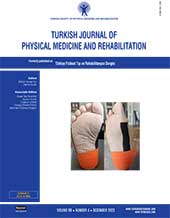The effect of home-based cardiac rehabilitation on arterial stiffness and peak oxygen consumption in patients with myocardial infarction
2 Department of Internal Medicine, Jeju National University Hospital, Jeju National University School of Medicine, Jeju, Republic of Korea DOI : 10.5606/tftrd.2023.11637 Objectives: This study aims to investigate the effectiveness of home-based cardiac rehabilitation (CR) on arterial stiffness in patients with acute myocardial infarction (AMI).
Patients and methods: Between January 2015 and December 2017, a total of 135 patients (120 males, 15 females; mean age: 58.8±11.1 years) with AMI who were referred for CR were included. Home-based CR was prescribed based on a cardiopulmonary exercise test (CPET) for at least six months. All patients completed three consecutive CPETs and brachial-ankle pulse wave velocity (baPWV) measurements at one, four, and seven months after onset.
Results: After six months of CR, there was an improvement in peak oxygen consumption (pVO2) (Month 1, 28.7±6.4 mL/kg/min; Month 4, 31.6±6.3 mL/kg/min; Month 7, 31.2±7.1 mL/kg/min, p<0.001) and a reduction in baPWV (Month 1, left, 1546.0±311.2 cm/sec, right 1545.5±301.5 cm/sec; Month 4, left, 1374.9±282.5 cm/sec, right 1371.6±287.5 cm/sec; Month 7, left, 1362.9±287.0 cm/sec, right 1365.5±281.1 cm/sec, p<0.001).
Conclusion: In patients with AMI, arterial stiffness and aerobic capacity improved after six months of home-based CR, particularly in the early stages of rehabilitation. These results suggest that changes in baPWV are useful in determining the effectiveness of CR and pVO2 in the initial stages of CR.
Keywords : Arterial stiffness, home-based cardiac rehabilitation, myocardial infarction, peak oxygen consumption

















